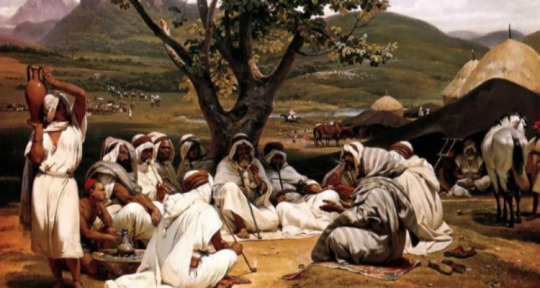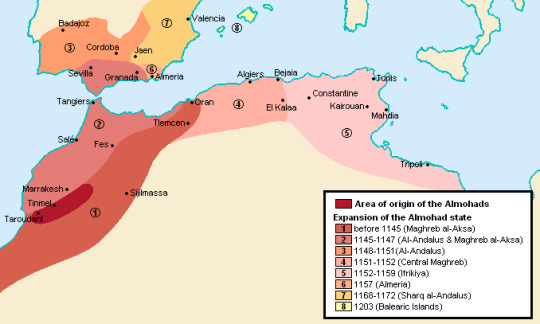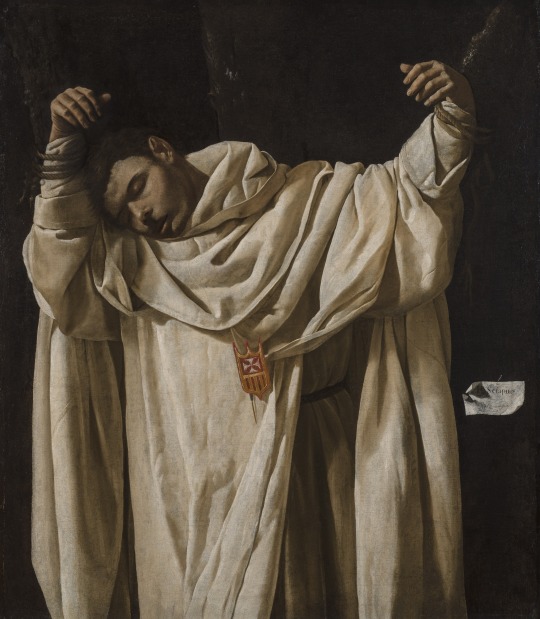#it's almost comedic how brutally the succession of bad events happens
Explore tagged Tumblr posts
Text
Me explaining Jason lore to a friend:
Me: So his dad goes to jail and then he takes care of his mom while she's sick and develops addiction but she dies and then he's on the streets, where he's like, starving. But then he tries to steal the wheels of the Batmobile and meets Batman!
Her: oh nice
Me: yeah, after a quick stint in a terrible group home he's taken in by Batman and becomes Robin and he's an absolute sweetheart, he has his issues sometimes but like they're so understandable and he's the cutest! And then he may or may not kill a man after finding the body of his victims who killed herself, and then he finds out his mom wasn't his bio mom so he runs away to find her, but he tells her he's robin and then she betrays him and sells him out the Joker, who brutally beats him up with a crowbar! And then there's a bomb that explodes and he tries to shield his bio mom from the blast! And she still dies! And he also dies! At fifteen years old!
Her: wait what
Me: and then he wakes up in his grave
Her : oh no
Me: and he has to dig himself out.
Her: what
Me: and then he immediately gets hit by a fucking car and is brought to the hospital where he immediately falls into a coma
Her: wtf
Me: and then he's catatonic because of brain damage
Her: ...
Me: It gets worse.
#so many BAD EVENTS#and for what#jason todd#dc#red hood#dc comics#robin#jaybin#robin ii#it's almost comedic how brutally the succession of bad events happens#like bro literally cannot catch a break#batman a death in the family#didn't even include that time he had to crawl through a pile of corpses as robin#sir that is a fifteen years old what the hell
2K notes
·
View notes
Text
What Made the Almohad Caliphate So Bad?

Why the North African caliphate was the medieval equivalent to the Islamic State of Iraq and the Levant.
A common misconception about the Crusades, and particularly of the Reconquista, is that all Islamic states were essentially the same and united under the same banner when in reality, they had their own peculiar differences and were just as divided as the Christians were. Nothing exemplifies this better than the Almohad Caliphate, a 12th century Berber empire that emerged as a rebellious movement in the rapidly decaying Almoravid Empire and rose high enough in under a century to threaten Christendom before being beaten by the Crusaders.
“But Gaius”, I hear some of you saying: “ISIL is already an medieval minded organization. How they could be any different than the ones who lived in medieval times?”. Ah, my friends, there is more to ISIL than mere brutality and cruelty that conventional views tend to underestimate. One of the things that distinguished ISIL were that wanted to “purify Islam” by killing anyone they perceived as “apostates” or “infidels”. That is where the Almohads or al-Muwaḥḥidūn in Arabic (meaning “monotheists” or “unifiers”) come in.

Let’s start with their founder Ibn Tumart, a fiery Berber mullah notorious for being ultra-conservative and opposing art, songs, mixing of sexes in public and the selling of pork and alcohol, which were a common sight in the Mahgreb at the time, and blamed this on the laxness of the Maliki authority. While the Maliki school of thought is one of the most rigid ones in Sunni Islam, Tumart’s problem was that they tended to rely more on jurist consensus rather than following the Sunnah and the hadith to it’s letter.
His entire life reads like a comedic sketch: his fiery preachings lead to him getting expelled by the local authority until he moves to the next town and the exact same thing happens. It’s said this even happened in Mecca when he performed the hajj being thrown out because of his screeching. On the way back, he sailed on a ship and began throwing out boxes of wine and lecturing the sailors to pray at the correct time, leading them to be fed up and throwing him overboard (they fished him back later).
When Ibn Tumart made his way back to the Maghreb, he stopped by the Almoravid capital in Marrakesh and assaulted an emir’s sister for going out unveiled. He was brought before the local authorities and defended himself saying that he was merely a voice of reform and lectured the local emir and his jurists like he has been doing from town to town. When countered that at least on points of doctrine, there was little difference between them, Ibn Tumart brought out more emphasis on his own peculiar doctrines. After a lengthy examination, the Almoravid jurists of Marrakesh concluded Ibn Tumart, however learned, was blasphemous and dangerous, insinuating he was probably a agitator, and recommended he should be executed or imprisoned. The Almoravid emir, however, decided to merely expel him from the city, after a flogging of fourteen lashes.
That was an extremely poor decision, because Tumart proceeded to retreat to a cave in Igiliz, which was an conscious effort to emulate Muhammad when he entered the cave of Hira, where he adopted an ascetic life. That is when he began to attract followers gaining the fame of an holy man and miracle worker. In 1121, Ibn Tumart lamented his failure to persuade the Almoravids to reform by argument and after a particularly moving sermon, he suddenly “revealed” himself as the true Mahdi, the redeemer of Islam expected to return towards the end times. This was effectively a declaration of war on the Almoravid state - for to reject or resist the Mahdi's interpretations was equivalent to resisting God, and thus punishable with death as apostasy.
Though they began armed rebellion in the very next year, they didn’t exactly manage to have a successful track record against the Almoravids despite their weakened state. In fact, the Almohads were nearly annihilated during the Battle of al-Buhayra where several top generals were killed and Tumart himself died not too long afterwards. The death of their spiritual leader should have marked the end of their movement, but it was his successor Abd al-Mu’min who picked up the slack and proved to be far more competent in warring. He managed to conquer Marrakesh, overthrow the Almoravids and formally establishing the Almohad state which extended over Northern Africa as far Mamluk-held Egypt and managed to lead a Islamic resurgence into Iberia (or Al-Andalus as it was known by Muslims) retaking some territories lost to the Christian states in the north.

One of the things that distinguished the Almohads is that they rejected the doctrine of dhimmitude given to Christians and Jews living under their domain, allowing them to practice their religion on condition of submission to Muslim rule and payment of jizya. Sounds good right? No. The Almohads instead gave a choice to their non-Muslim subjects: convert to Islam or die. Except even those who converted were still forced to wear identifying clothing as they were not regarded as genuine Muslims. So imagine this scenario, dhimmitude is already a humiliating status, but now being forced to accept a religion they don’t want while having the same status as before is even more unbearable. Needless to say, this led to the mass martyrdom or exodus of many Christians and Jews.

Rabbi Abraham Ibn Ezra, who himself fled the Almohad persecutions, composed an elegy mourning the destruction of many Jewish communities throughout Spain and the Maghreb under the Almohads. Among the notable Christian victims are the Franciscan friars John of Perugia and Peter of Sassoferrato, Saint Daniel and his companions Agnello, Samuel, Donulus, Leo, Ugolino and Nicholas, and the Mercedarian saint and priest Serapion of Algiers was persecuted when trying to free Christian captives. Non-Muslims were not the only victims of Almohad’s fanaticism: the famous Islamic philosopher Averroes who is held in high regard by Westerners today was accused of blasphemy for among many things, criticizing Muhammad’s treatment of women, and as such was exiled. It’s also perfectly plausible that many of the things deemed acceptable by the Almoravids (women uncovered, music, art, etc) were forbidden by the Almohads.
The darkest moment for Christendom came with the Battle of Alarcos, when an Almohad host led by Abu Yusuf Ya'qub al-Mansur decisively defeated the Kingdom of Castille and the knightly Orders of Santiago and Evora, killing over 30,000 into battle and leaving several castles deserted and many areas open to Islamic raidings. The Almohads were threatening to push north as far as possible and threatened to "march all the way to Rome and sweep the Basilica of Saint Peter with the Sword of Muhammad". This alarmed Pope Innocent III who called the European knights to crusade and served as basis for this song as by bard Gaudavan as rallying cry to help the Iberian Christians.
youtube
This ultimately culminated in the Battle of Las Navas de Tolosa where King Alfonso VIII of Castille - the same one beaten in Alarcos - led the Christian host of 14,000 men (Portuguese, Castillans, Templars, Germans, French and others) against the Almohad caliph Muhammad al-Nasir, who had more than twice with 30,000 men in his command. Despite the impossible odds, the Christians managed to win (check this video for the details).
youtube
This defeat was a decisive point in the Reconquista, as the Almohad power was broken and they would never recover, with their territories breaking up into petty kingdoms (or taifas). It also marked the downfall of Islamic rule, since from now on Christians - more specifically Spaniards - would retake almost all their lands. Just before their end, the Almohads would ditch their doctrines in favor of more traditional ones and repudiate Ibn Tumart as the Mahdi, but their end came when their final pretender Idris al-Wathiq was killed by a slave and his possessions were later taken by the Marinid Sultanate who would try to take Iberia again, but they were soundly beaten in the Battle of Rio Salgado by the now much stronger Portuguese and Spaniards (though them taking the sultan’s entire harem and putting them to the sword may have done the trick).
So now you might be asking me now: why is this all relevant to the Islamic State? You see, their founder Abu Musaib al-Zarqawi was sorta kinda like Ibn Tumart, except he Zarqawi was a petty thief and a pimp rather than a scholar. His views were radical even by Salafi jihadists’ standards, urging the death of Shia Muslims more than the Christians and Jews. Osama bin Laden himself, at least thought as such and never particularly liked Zarqawi whether for personal reasons (Bin Laden’s own mother being Shia herself) or pragmatic ones (Zarqawi’s actions could divide Muslims more than unite them). And just like Ibn Tumart, he never lived to see the Islamic State (or Al-Qaeda in Iraq as it was known in his lifetime) become the nightmarish menace to everyone.
There are of course many obvious differences: ISIL apparently made a point to adhere to the dhimmi contract as far as the Assyrian Christians were concerned while the Almohads ditched it altogether. Or that Zarqawi never claimed to be the Mahdi, nor did his successor Abu-Bakr al-Baghadadi to legitimize themselves. Though there are many important parallels: ISIL was in essence an apocalyptic group just like the Almohads followed the Mahdi, whose presence marked the end times. They viewed the events in Syria and Iraq as the fulfillment of the prophecies about the end times and heavily derived their narrative from it. Their initial propaganda magazine Dabiq was named after an town where a hadith claims a great battle will occur between the Muslims and the Romans where the apocalypse will take place and Muslims will emerge victorious. The “Romans” in this case represent the West, which is why they carried out incessant attacks to provoke Americans and Europeans to fulfill this prophecy.
The Almohads emerged during a period here they perceived Islam had decayed and needed reform or rejuvenation which is an rhetoric used by ISIL, but not necessarily exclusive to them. It’s somewhat reasonable to understand the Almohad Caliphate is not as well-known or prominent as other empires like the Umayyads or the Ottomans, since they are more important to local history, but I think we’d benefit more if we paid attention more.
16 notes
·
View notes
Photo



WOKE! Film Reviews for Spring ’19
We Shouldn’t’ve Left You Without Some Dope Films to Step To!
by
Lucas Avram Cavazos
This first weekend of ‘Setmana Santa,’ as it is called in Catalonia, ushers in the fateful reality that we’ve all thankfully made it past a long, cold winter. It also welcomes with it the understanding that this year, Holy Week/ Easter Week/ Spring Break Week has come rather late, by well over a month, and since this is the first time in a month that I’m gracing the blogosphere with my critiques just before the week leading up to the 3rd Annual BCN-Sant Jordi Film Fest, it’s time to get woke. And that’s why this critic had to get all sorts of motivated and prepared as we dive into the real Movie Season 2019. Let’s get started with a few outings now, and I’ll return with a few outings more later on in the week. Without further ado…
Dolor y Gloria ####-1/2 This may be the best film that has been released so far this year. The fact that it has been so eloquently served up to us by Pedro Almodovar, my favourite Spanish director, may make things seem biased, to which I’d query… Have you seen the movie? This could easily be one of his strongest efforts, if not THE strongest, in years and the way that Almodovar has crafted it, using character actors he once worked with in his earlier heyday, has been expertly mapped out to weave a tapestry of torturous drama and comedic, sometimes drug-addled, delights. What is also apparent is that Pedro is very likely speaking about himself, as a creator, a director, a man. Detailing the current and flashback-to-the-60s life story of Salvador Mallo (Antonio Banderas), a revered if almost-forgotten director and writer from the 80s and 90s, we also get a peek into the history and mentality of a Spain and a (Movida) movement put away onto a shelf for far too long. What we find about Mallo is that whatever life circumstances have been thrown at him, he has managed to take them on with a certain, sad aplomb. It is a testament to his waning bravado that Mallo then goes about trying to reconnect with those long-forgotten members of his film past, briefly dabbling in heroin whilst using it as a metaphor for his need to deal with past pain bodies. In its own way, I’m quite sure that Almodovar did exactly the same thing in processing his own mother’s passing a few years back, and it brings into question the very nature of how every human being varies in their handling of life’s issues. I dare say that this film is something bordering on a frighteningly sharp therapy session and frankly, the performances here, especially by Banderas (and to a smaller extent, Penelope Cruz as his mother via flashbacks) are something from a prized possession of actors’ genius. One can only hope that award nominations get thrown their way later on this year…Superb Spanish cinema!
Perhaps the title gives a slight hint but the basis of the film that is Us ###-1/2 goes a long way in reminding all of US that evil rarely just dies…case in point, Donald Trump. Not to digress, so this second outing in big screen film direction by comedian/writer Jordan Peele attempts to go a step further in modern-day, U.S.-American, social-class politics. After his impeccably-timed, incredibly-successful and Oscar-nominated Get Out roared a somewhat sleepy horror genre/audience back to life, we now get a continuation or ode on a similar theme. Showcasing upper middle-class protagonists on screen who are not white has thankfully become more common since the 80s and 90s, so when it’s still possible to inject a bit of realism, I applaud the creator. That said, there is so much going on in Peele’s latest socio-cultural opus that when the horror-action takes over, you almost find yourself relieved; which isn’t to say the film lacks in punches and pull, but you definitely start to feel the languid draw of boredom a few times throughout the nearly two hour film. After the film opens in 1986 with a real advert to a throwback charity campaign, we quickly follow young Adelaide through an anecdotal moment that seems to come reeling its frightening head when she’s an adult again. The star draw of Oscar winner Lupita Nyong’o and Marvel wiz kid Winston Duke cannot be overstated, as they certainly bring some fan base and critical darlings with them, but the way they handle the mum and pop characters of Adelaide and Gabe Wilson is superb…plus the camaraderie between their cute as heck, and then bad-ass as heck, kids is adorable. When on a getaway at their lake home near Santa Cruz, CA, an unfortunate and sudden group of unsettling events is what finally jolts us, the viewers, wide awake when the sordid nightmare of a flashback-like attack commences and carries on for the rest of the fraught film. What creeps the whole thing out even more is that the attack comes from a psychotic group of almost familial doppelgängers. What struck me as odd is that Peele seemed to lose a sense of coherence just as the film started to pick up speed with the action, thematically and within a sense of the genre. The acting keeps the film bouncing along thankfully, but after the socio-cultural punch that was Get Out, I suppose we were all a bit wanton for more.
The Kindergarten Teacher #### Another tandem Netflix-cinema house offering, this US-American take on an Israeli original is just as good…thankfully. With an ending that is as unexpected as it is deserved, this little indie feature will give you something to ruminate for days after. which in turn is why I gave it such a sufficiently high score. Let’s talk. The monotonous life of a primary education teacher can be one of serenity or hardships, and I can only surmise that it would mostly depend on one’s intestinal fortitude, though I sinerely doubt, I’d be cut out for it. Exquisite actress Maggie Gyllenhaal plays mid-40ish Lisa, pretty mom to two teens and loving wife, who encounters something extraordinary one day whilst teaching her sweet class of five and six year olds. An incredibly gifted five-year old chap named Jimmy (read:cutest little tyke on-screen EVER!) has the uncanny ability to tap into his inner recesses and pull out beautiful poetry that takes on meanings and lives of their own, painting a canvass of wonderment for our long-suffering Lisa. You see, what is easy to decipher as one watches is that Lady Lisa has slowly begun waging her own, tiny war on her mundane life by the commencement of living vicariously through this little man-poet. When she steps out of her bounds and finagles a way to take little Jimmy to a Bowery-based poetry slam, this very NYC borough tale takes a turn for the cringe-worthy as we slowly watch an empathetic woman lose herself in a self-delusional, self-pitying way. This complicated if completely relatable piece of celluloid will challenge anyone’s views on what young tykes are capable of feeling, doing and demonstrating. It will also leave you with the pertinent question of deciding what you think happens to the main characters as the film ends. Brutally honest and highly poignant.
#abitterlifethroughcinema#theclubwithlucas#dolorygloria#pedroalmodovar#banderas#penelopecruz#us film#jordanpeele#lupita nyong'o#WOKE#thekindergartenteacher#maggie gyllenhaal#poetryINmotion#BCNinVOSE
0 notes